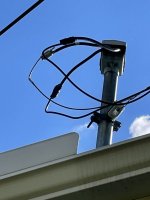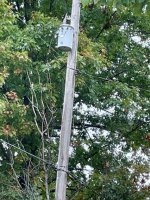Taylorjm
Active Member
So, in a house we bought, it was built in 1995 and has a 150 amp service. So everything is somewhat still up to date. It's a single story ranch with a walkout lower level. We had central ac and ductwork added, since it has boiler heat. It's a 3 ton unit, nothing outrageous. All the lights in the home are led. We are finding when certain appliances turn on, we get some lights dimming for a second. If the a/c, well, microwave or garbage disposal turn on some lights in the house will dim for a second. We have gas stove and dryer, so not very many hungry appliances at all. The well and a/c are 220v and the microwave and garbage disposal are both on their own circuits, and the lights are on other circuits. So it's not an issue of the lights being on the same circuit, or even on the same leg since the a/c and well are on both legs. The only other thing I noticed is the service drop from the poco seems a lot smaller wire than the 2/0 aluminum that runs from the service head, to the meter and to the breaker box. I know the service drops can be smaller, but even if it was copper, seems like it's nowhere close to being able to handle 150 amp service. What do you think?


